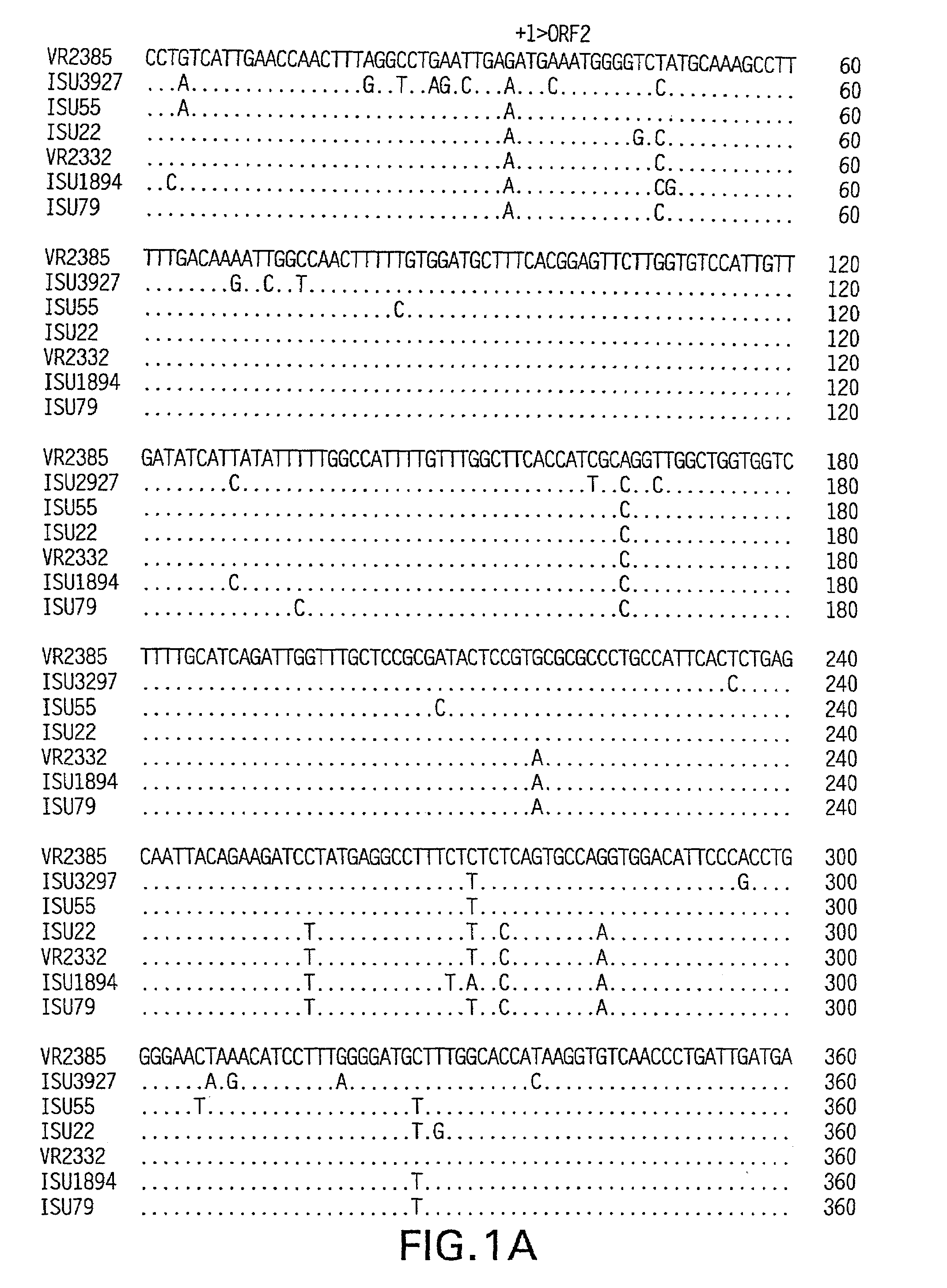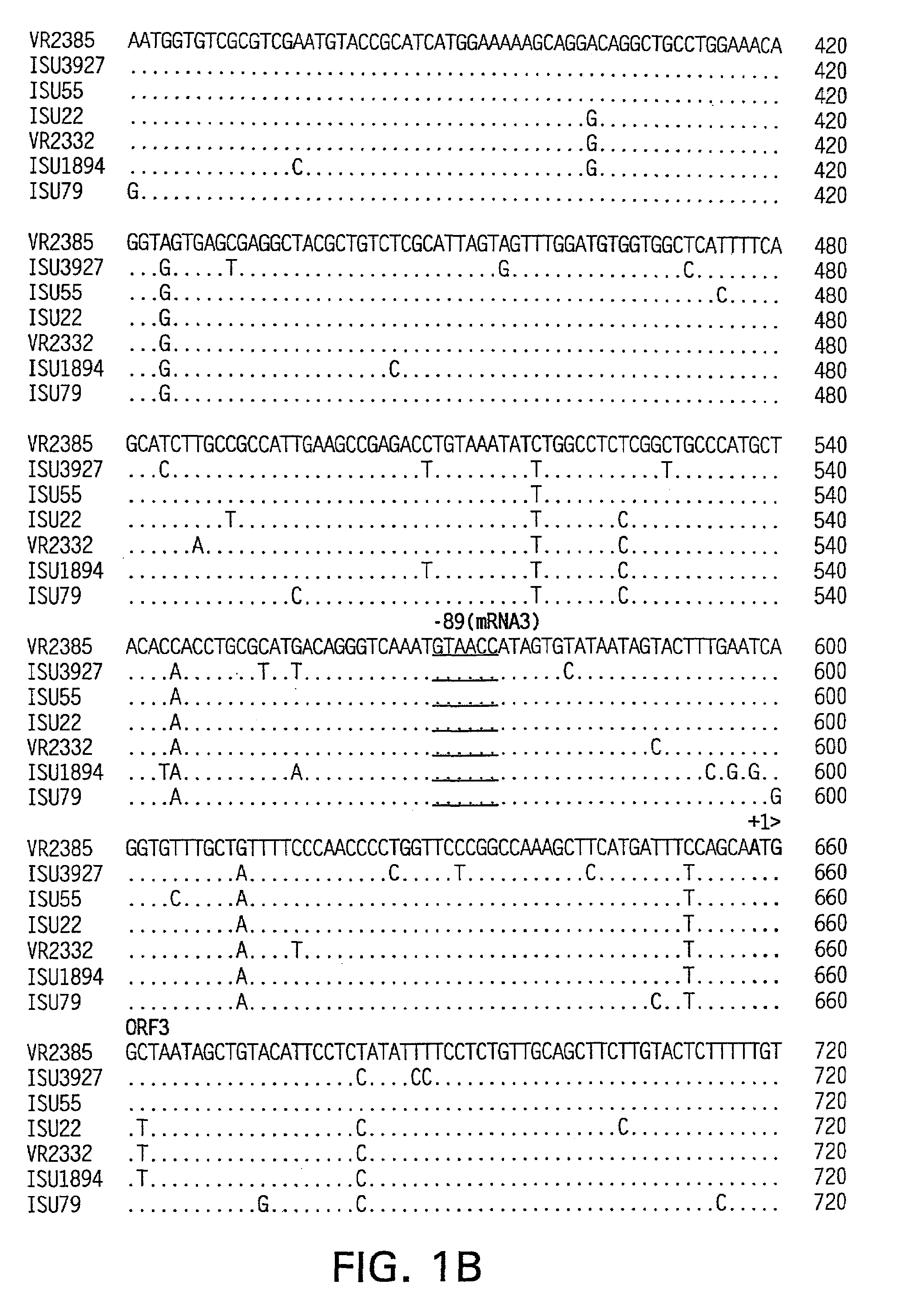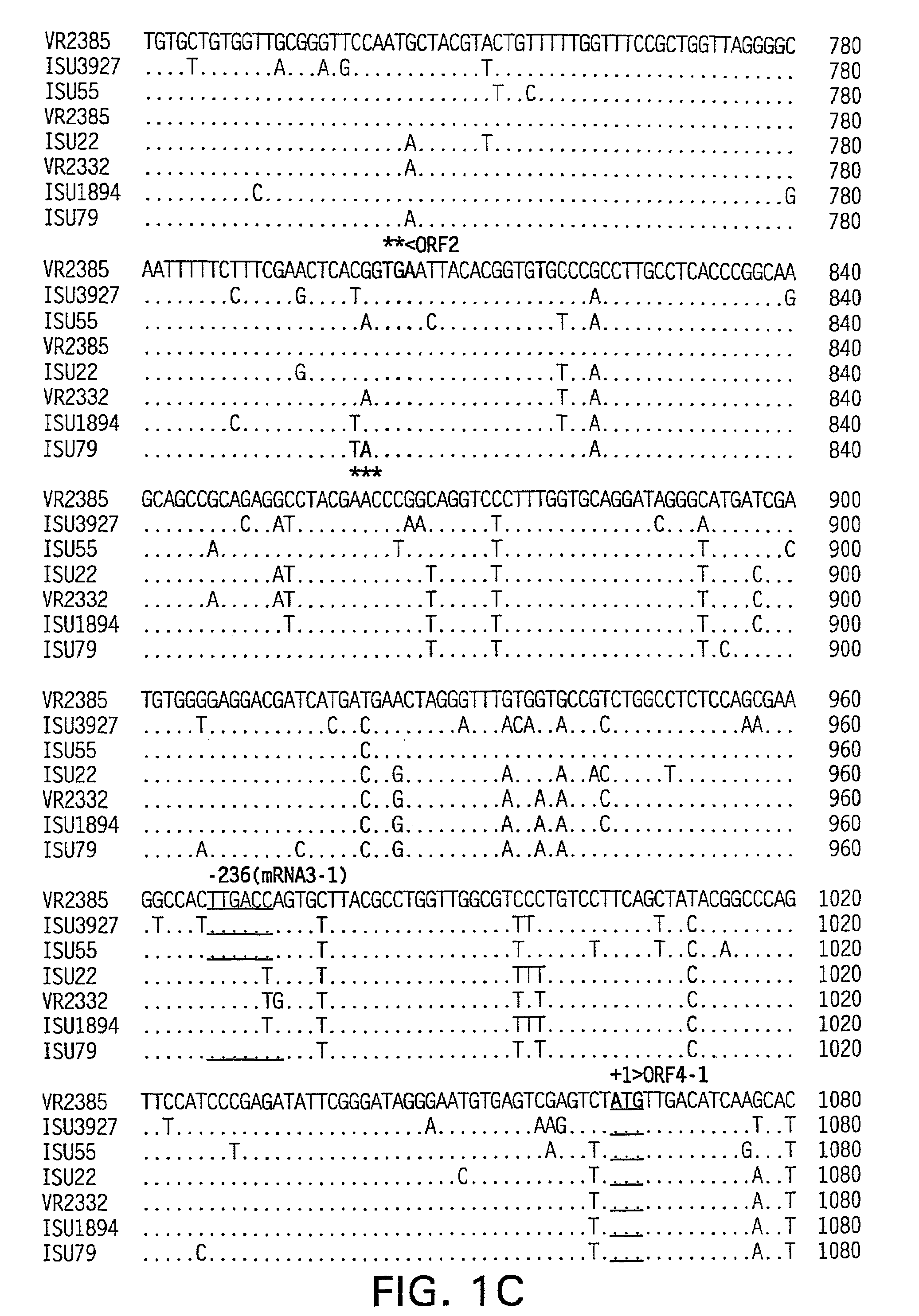Proteins encoded by polynucleic acids of porcine reproductive and respiratory syndrome virus (PRRSV)
a technology of polynucleic acids, which is applied in the field of polynucleic acids isolated from porcine reproductive and respiratory syndrome viruses, can solve the problems of limited information regarding the sg mrnas of prrsv strains, especially the u.s. prrsv, and achieve the effect of raising an effective immunological respons
- Summary
- Abstract
- Description
- Claims
- Application Information
AI Technical Summary
Benefits of technology
Problems solved by technology
Method used
Image
Examples
example 1
Summary:
[0147]The sequences of ORFs 2 to 5 of one low virulence, one “moderate” virulence and one high virulence U.S. PRRSV isolate have been determined and analyzed. Comparisons with known sequences of other PRRSV isolates show that considerable sequence variations at both nucleotide and amino acid levels exist in ORFs 2 to 5 of seven U.S. isolates with differing virulence. However, ORFs 6 and 7 of these seven U.S. isolates are highly conserved (U.S. application Ser. No. 08 / 301,435). Extensive sequence variations were also found in ORFs 2 to 7 between the European LV and the U.S. isolates. The least virulent U.S. PRRSV isolate known (ISU-3927) displayed the most sequence variation, in comparison with other U.S. isolates.
[0148]The phylogenetic relationship of the U.S. isolates was also analyzed. Phylogenetic analysis of the ORFs 2 to 7 of the U.S. isolates indicated that there are at least three groups of PRRSV variants (or minor genotypes) within the major U.S. PRRSV genotype. Cons...
example 2
[0185]During the replication of PRRSV, six subgenomic mRNAs (sg mRNAs), in addition to the genomic RNA, are synthesized. These sg mRNAs were characterized in this experiment.
[0186]The sg mRNAs of PRRSV form a 3 ′-coterminal nested set in PRRSV-infected cells. Each of these sg mRNAs is polycistronic and contains multiple open reading frames, except for sg mRNA 7 (as shown by Northern blot analysis using ORF-specific probes). The sg mRNAs were not packaged into virions, and only the genomic RNA was detected in purified virions, suggesting that the encapsulation signal of PRRSV is likely localized in the ORF 1 region.
[0187]The numbers of sg mRNAs in PRRSV-infected cells varies among PRRSV isolates with differing virulence. An additional species of sg mRNA in some PRRSV isolates was shown in Experiment 1 above to be derived from the sequence upstream of ORF 4, and has been designated as sg mRNA 4-1.
[0188]The leader-mRNA junction sequences of sg mRNAs 3 and 4 of isolates ISU 79 and ISU 1...
example 3
[0233]Cell line ATCC CRL 11171 was used for the propagation of PRRSV isolates. The maintenance of the cell line and isolation of virus were the same as previously described (Meng et al., J. Gen. Virol. 75:1795-1801 (1994); Meng et al., J. of Veterinary Diagnostic Investigation 8:374-381 (1996)). Plasmacytoma cell line SP2 / 0 was used for cell fusion in MAb preparation. PRRSV ATCC VR 2385 was used as antigen for screening of hybridomas secreting PRRSV specific monoclonal antibodies.
[0234]Indirect Immunofluorescence Assay (IFA). Monolayers of ATCC CRL 11171 cells were inoculated with PRRSV VR 2385 at 0.1 multiplicities of infection, incubated for 48 hrs and fixed with methanol. Hybridoma supernatant was incubated on the fixed-cell monolayer at 370C for 30 min. Fluorescein-labeled goat anti-mouse IgG (H+L) conjugate was used to detect the specific reaction. One PRRSV N (ORF 7 products) specific monoclonal antibody, PP7eF11 was used as a positive control and cell culture supernatant from...
PUM
| Property | Measurement | Unit |
|---|---|---|
| Fraction | aaaaa | aaaaa |
| Fraction | aaaaa | aaaaa |
| Fraction | aaaaa | aaaaa |
Abstract
Description
Claims
Application Information
 Login to View More
Login to View More - R&D
- Intellectual Property
- Life Sciences
- Materials
- Tech Scout
- Unparalleled Data Quality
- Higher Quality Content
- 60% Fewer Hallucinations
Browse by: Latest US Patents, China's latest patents, Technical Efficacy Thesaurus, Application Domain, Technology Topic, Popular Technical Reports.
© 2025 PatSnap. All rights reserved.Legal|Privacy policy|Modern Slavery Act Transparency Statement|Sitemap|About US| Contact US: help@patsnap.com



